Israel, the Water Superpower
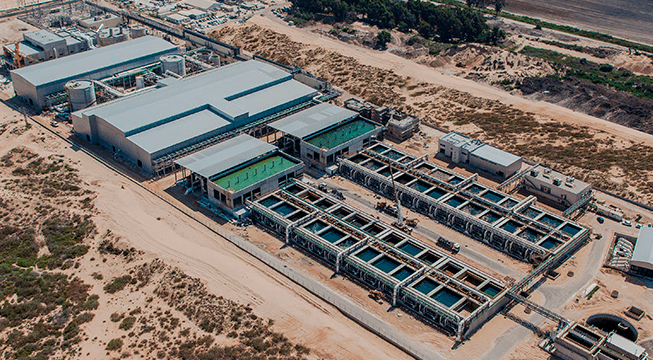

Less than a decade ago, Israel’s economy was teetering on the edge of a cliff as drought threatened the country’s long-term viability. The situation became even more dystopian as news reports showcased data suggesting the Middle East was in the midst of its worst drought in 900 years. But as the news of climate change’s impact on the region became worse, Israel not only survived but thrived. Investments in water technology turned Israel around and averted what would have otherwise been an intractable crisis.
And this tiny country has now become the global water superpower.
The roots of Israel’s water technology sector lie in the country’s fight for independence. In 1948, for the first time in over 1,600 years, there was an independent Israel, albeit one surrounded by hostile neighbors while the rest of the world was still distracted with rebuilding after World War II. Much of the urbanizing world saw agriculture as a relic of the past, but this fledgling country’s leaders saw farming as the foundation of both Israel’s future economic strength and as a means toward resilience. Although many industrialized countries saw a decline in land devoted to agriculture over the years, Israel’s total amount of farmland actually surged.
But that agriculture boom, along with Israel’s continued population growth, imposed a huge strain on its water capacity. The Sea of Galilee, one of Israel’s few reliable sources of fresh water, dropped so low that by 2010 it threatened to reach the “black line” at which salt infiltration would have harmed this historic and critically important lake forever.
Although conservation efforts and water recycling are part of Israel’s rebuilding of its water infrastructure, desalination played a pivotal role in transforming the country from one burdened by drought into one that now creates more fresh water than it needs.
As writer Rowan Jacobsen recently highlighted, the linchpin of Israel’s water resurgence is the Sorek Desalination Plant, the largest reverse-osmosis (RO) desalination plant in the world. Desalination is one way to prevent groundwater depletion and keep economies afloat where water is scarce. Critics, however, have long assailed this technology for being energy intensive and expensive. The difference with the Sorek plant, however, is its advancement in design and materials to the point at which David Talbot of MIT Technology Review describes it as the “cheapest” desalination plant on record.
The result is not only a huge domestic success for IDE Technologies, the head contractor of the Sorek Plant, but it also presents huge business prospects worldwide for the company. A subsidiary of that firm, IDE America Inc., designed the Carlsbad Desalination Plant outside of San Diego. The plant, which delivers almost 50 million gallons of fresh water to the surrounding region daily, bills itself as the largest such facility in North America.
This is quite a turnaround for Israel; in 2004 the country depended on rainwater and aquifers for its water needs. Now, in addition to Sorek, three desalination plants and others scheduled to open soon will provide about half of Israel’s fresh water by the end of this year. Add to the mix Israel’s aggressive water recycling programs and what Haaretz calls the country’s “holy grail” -- drip irrigation, the early development of which can be traced to this corner of the Levant and has had a key role in agriculture becoming far more water efficient across the world.
Israel’s advancements in desalination and water efficiency are case studies that policymakers across the world must consider as they evaluate how to provide enough fresh water for citizens and businesses. One Israeli company, Netafim, has arguably had a huge impact in California's San Joaquin Valley, where farmers have confronted reductions in their water allotment after years of drought. And the country's neighbors across the Middle East, if all sides can put aside politics, have desalination technology at an arm’s reach that can help them cope with relentless climate change trends that show no sign of receding.
Image credit: IDE Technologies
Report: Progress Slow On Conflict Minerals


Three years ago, a groundbreaking rule mandated conflict mineral monitoring in corporate supply chains. Today, 70 percent of companies still cannot determine if their supply chains are conflict-mineral free, showing how much progress still needs to be made before we achieve ethical supply chains, Bloomberg reported last month.
Conflicts minerals are not new. Since the early 2000s, companies around the world were aware that several of the key minerals used in their products are often sourced from regions where there is active conflict, with the sales of said minerals often funding war atrocities.
In 2010, Congress passed the Dodd-Frank Act, which, among many other things, required U.S.-listed companies to investigate their supply chains for four conflict minerals – tin, tantalum, tungsten and gold. The law went into effect three years ago, and many hoped it would usher in an era of increased transparency.
Instead, we've seen little change in most industries. The lack of progress on conflict minerals is disappointing, to say the least. From Bloomberg:
“[T]here is a long way to go to reach full compliance with the SEC rules ... According to the analysis, 31 companies missed the deadline to file their conflict minerals reports on time, 77 didn't name the due diligence framework they used, 656 companies failed to disclose their suppliers' country of origin, and 228 companies didn't offer a conclusional statement.”
Some industries are doing a better job. Semiconductors, led by Intel, is one of the just 19 companies that underwent an audit to support claims of a completely conflict-mineral-free supply chain. Other industries are lagging, like – surprise – oil and gas, which had the lowest response rate to requests for information.
Eliminating conflict minerals is, of course, just one step in creating a truly ethical supply chain. In fact, conflict minerals are only the most egregious form of dirty minerals in a supply chain. Even non-conflict minerals can have huge environmental, social and human rights costs. As we speak, massive mining is seriously degrading the Tibetan plateau, the source of water for nearly 1 billion people, and where a long, lingering human rights tragedy is taking place. Yet, those are not considered, by many, to be conflict minerals, and it is likely that many Tibetan minerals end up on so-called “clean” electronics company's supply chains.
The solution? Truly transparent supply chains. We're long past the era of companies hiding behind their complex supply chains. Technology is making traceability easier. The only thing often missing is not capability, but the will of companies to invest in ensuring they now only know their supply chain, but have the tools and systems in place to ensure compliance with best practices.
Moreover, there is true market potential for products produced using the right materials from a fully transparent supply chain. Look at the mobile industry. Right now, the only smartphone that can be considered truly ethical is the European-produced Fairphone, which is not only 100% free of conflict minerals, but also used fair manufacturing practices, clean energy, and allows for simple recycling of old phones.
The Fairphone has been beating sales expectations since it was launched, showing that there is real consumer demand for ethical products. Other companies, like Hewlett-Packard, who has ranked highly in Greenpeace's electronics rankings (which does take into consideration conflict minerals) are making marked progress. But far too many companies are not.
Image credit: Brian Voon Yee Yap via Wikimedia Commons
Marketplace Lending: More Than Personal Finance
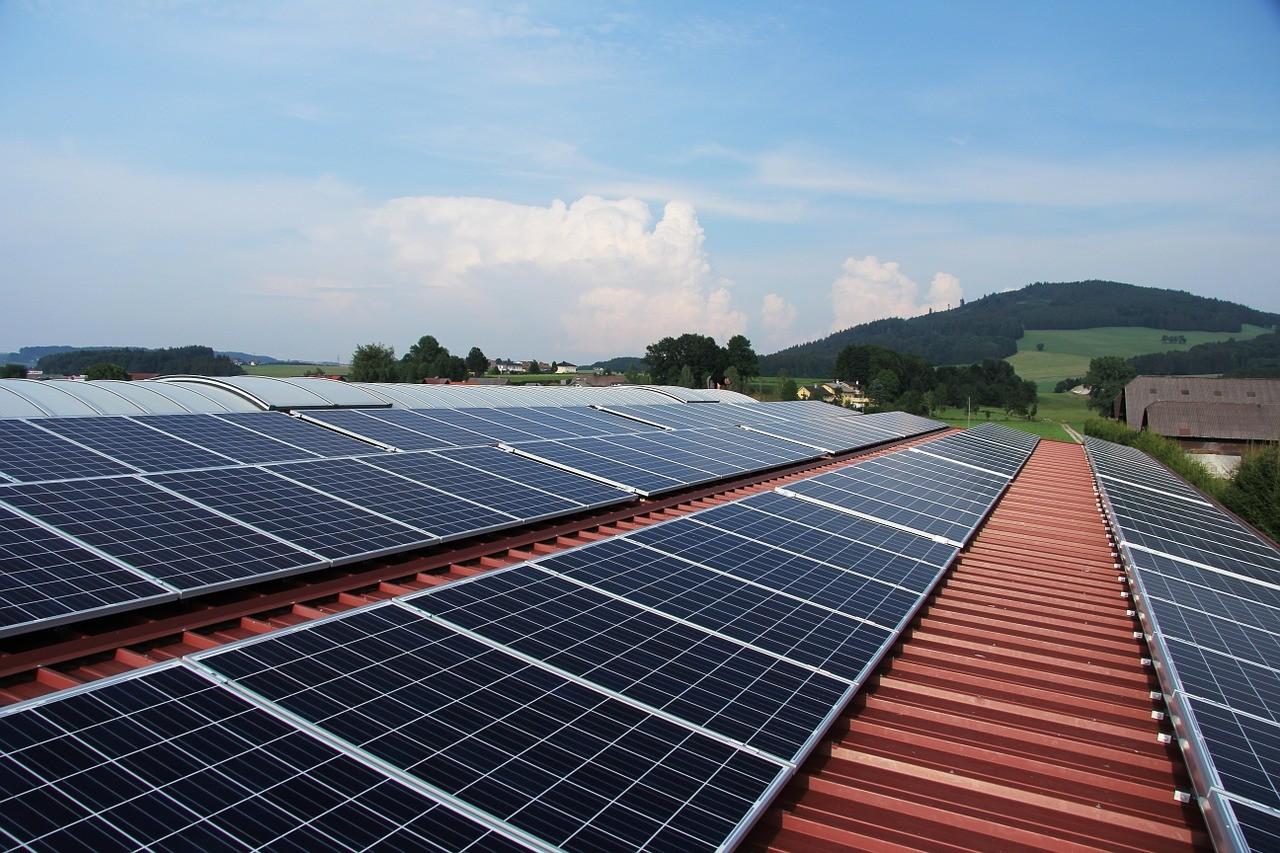

By Graham Smith
The trouble encountered by Lending Club, the most well-known name in marketplace lending, in April shook confidence in an industry that originated in order to fill a void caused by banks’ reluctance to lend following the financial crisis. Marketplace lending evolved as a way to connect borrowers with lenders directly and eliminate the need for banks as middlemen. Numerous observers questioned the viability of the marketplace lending business model and predicted that Lending Club’s trajectory marks the beginning of an end.
But while marketplace lending may be under fire in the personal finance space, it is stronger than ever in industries like that of renewable energy, where certain market segments have stagnated due to limited access to capital. The ambitious goals set during COP21, such as a U.S. target to source 20 percent of electricity from renewable sources by 2030, will require the use of innovative financing models. Here, marketplace lending will be not only viable, but instrumental.
Within the solar industry, the historically stagnated commercial solar sector is especially poised to benefit from access to marketplace lending. When analysts report that solar growth is skyrocketing, they are referring to the residential and utility sectors. The residential sector has grown an impressive 66 percent year-over-year, and utility solar represented more than half of all solar installations in 2015. The commercial solar market, however, has seen negative growth over the past few years despite the enormous estimated market potential – $67.5 billion in the Northeast mid-sized commercial sector alone. The primary reason for this stagnation? Limited access to financing.
Commercial solar developers face challenges that do not exist in other segments of the industry, due in large part to the variability in shape and size of projects. Commercial businesses can range from the small deli around the corner to a large Walmart facility. The lack of standardization affects the logistics of developing a project, from the site evaluation and design of the solar installation to the writing of legal contracts. Increased complexity adds increased transaction costs, which make financing expensive and leave numerous solar projects in limbo indefinitely.
This is where marketplace lending comes in. Traditional sources of capital – such as large banks – generally refrain from lending to commercial solar projects. Often, the size of projects and variability in characteristics lead to a lack of cost-effectiveness for banks. By streamlining the financing process through online platforms, marketplace lending lowers transaction costs and increases efficiency, overcoming one of the biggest obstacles that face commercial solar developers. Automating these processes can lower transaction costs by as much as 70 percent, enabling a far greater number of solar developers to receive financing and develop high-quality, impactful commercial projects that otherwise may not have been built.
Marketplace lending has the potential to break down barriers in select sectors that are ripe for growth, and commercial solar is certainly one of them. Additionally, as investors experience the ease, predictability and transparency offered by marketplace lending in commercial solar, more capital will flow to the sector and its potential will be fully unlocked.
The financial innovation behind the marketplace lending model will undoubtedly continue to drive growth across commercial solar. Commercial solar, like many other sectors, will prosper only with the support of a robust network of high-quality alternative financing options.
Image credit: Pixabay
Graham Smith is the CEO of Open Energy.
A Critical Juncture in Capital Markets History

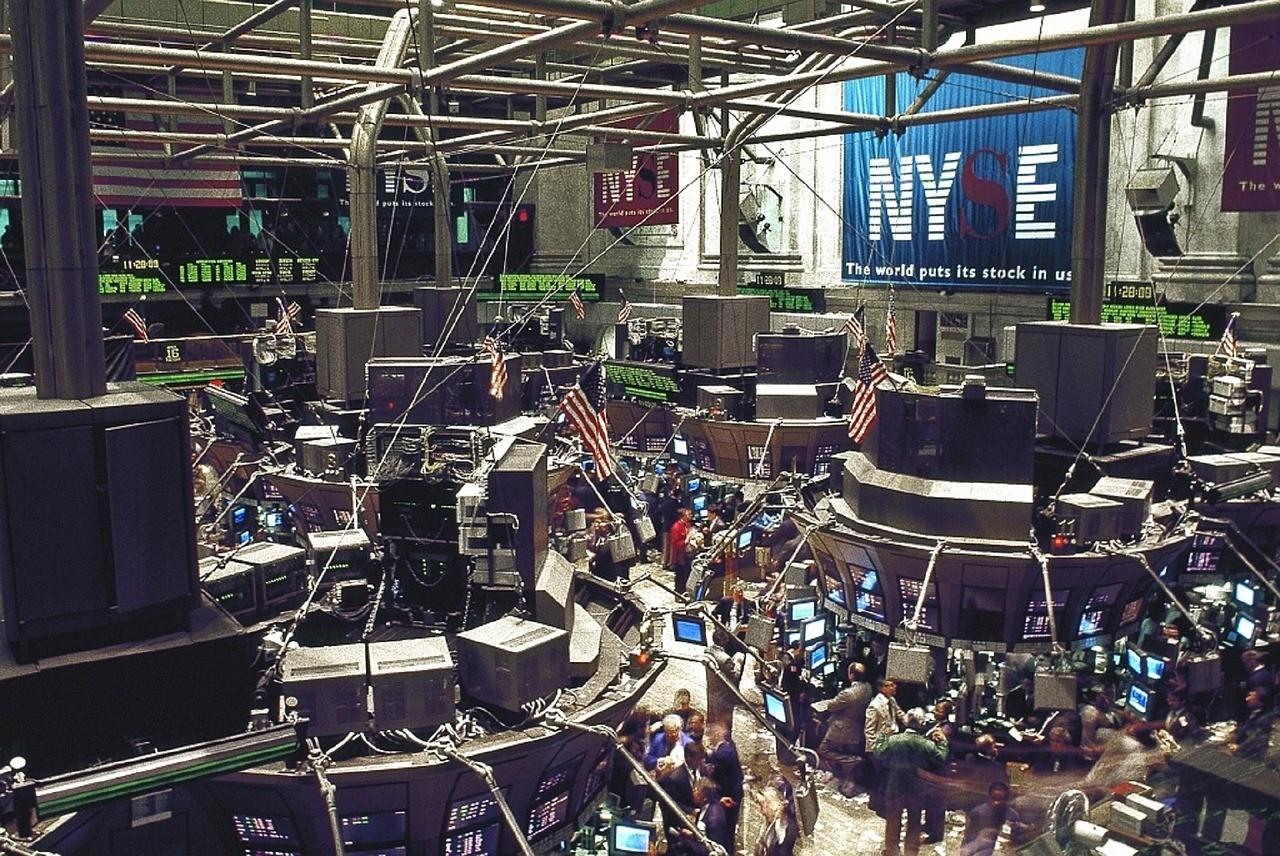
By Clara Miller
The CEOs of many of the country’s leading foundations are spreading the word that it’s time for the Securities and Exchange Commission to formalize corporate sustainability disclosure in the regulatory framework. We share the vision that society will benefit from the improved environmental, social and governance (ESG) performance of companies, as driven by investors’ ability to compare sustainability performance. Directing capital to address the critical sustainability challenges of our time and to anticipating and preparing for the challenges of the future is also increasingly understood to go hand-in-hand with maximizing financial returns.
Formal SEC guidance for the use of industry-specific sustainability accounting standards, such as those issued by the Sustainability Accounting Standards Board (SASB), will help public corporations disclose material, decision-useful information to investors. This will ultimately improve sustainability disclosure, thus resulting in heightened transparency, more accurate valuation of ESG risks and performance, and increased capital to improved sustainability outcomes.
In April of this year, the SEC issued a concept release on the Business and Financial Disclosure Required by Regulation S-K. What this means for companies and investors is that the regulations which govern how and what publicly-listed companies must disclose in their filings with the SEC could undergo the first substantive changes since 1982, with potentially transformative ramifications.
Embedded in the document are 11 pages discussing disclosure of sustainability-related information. Thus far, the SEC’s engagement on sustainability issues has been limited - and no coincidence - disclosure remains poor with lack of standardized, comparable, decision-useful information on ESG performance. When the Commission first examined investor interest in environmental and civil rights issues in the 1970s, they concluded that an “insignificant percentage of American shareholders” were interested in these matters. Fast forward to 2010. The Commission’s Interpretive Guidance on climate change disclosure was issued as a result of immense pressure from the investment community, with over 100 institutional investors representing $7 trillion petitioning the SEC to issue guidance on this important issue. In 2016, investor interest in these matters is even greater.
For decades now, concrete examples of financial impacts arising from sustainability issues have been mounting. From Peabody Energy’s bankruptcy and Chipotle’s E. coli outbreak, to the Rana Plaza building collapse and Takata’s airbag recalls, the landscape is littered with corporate mishaps and subsequent investor losses. Looking beyond the headlines, time and time again, research (such as that of Harvard Business School) has confirmed the financial impacts that sustainability issues can have on corporations.
This is important to foundations who are increasingly interested in assessing “what’s inside” their endowment portfolios and mobilizing their assets to support their missions. Mission-aligned investment within a diversified portfolio is challenging without comparable data and better insight into how public companies are managing environmental, social and governance issues.
Disclosure on sustainability issues is inconsistent and by and large ineffective. Some companies don’t report at all, many report using boilerplate language, and few report using metrics. While some companies disclose sustainability information in SEC filings, many only publish standalone sustainability reports, which are not an effective format for investors. As an example, climate change impacts all of society. Nevertheless, few companies effectively disclose information on the topic to investors. Two-thirds of companies in key sectors have either no disclosure or use only vague, boilerplate language for climate change disclosure in Form 10-K. When sustainability disclosure is subject to the same stringent rules as financial disclosure, investors will be able to more fully integrate sustainability information in investment decision-making.
Corporate sustainability reports and the proliferation of ESG-related questionnaires don’t do the job. They lack the rigor and standardization of SEC filings. Shareholder proposals -- two-thirds of which are now about ESG matters -- are burdensome for both issuers and investors. This is symptomatic of the market dysfunction around sustainability information - there is extraordinary frustration on the part of issuers with questionnaires and shareholder resolutions, and the same frustrations are shared by investors without access to material, investor-grade data sets that are a true and fair representation of performance. We have a window of opportunity to make the call for a market standard for sustainability disclosure.
This is why we are excited about the SEC’s recent concept release. This is a critical juncture in capital markets history. It’s time for the SEC to formalize corporate sustainability disclosure in the regulatory framework.
The SEC’s public comment period has closed. We joined investors, asset managers, corporations, and the public at large who sent an unmistakable signal to the SEC that sustainability-related information is of utmost importance. Sustainability issues are financial issues and the fact that they do reflect material information is much better understood since the last time the Commission looked carefully at these issues. Without sustainability issues reflected in the regulatory filings of public companies, investors have an incomplete picture of the full breadth of risk and opportunity that exists in their portfolio companies. It’s time to change that.
Image credit: Pixabay
Clara Miller is Heron Foundation president. Heron’s mission is to help people and communities help themselves out of poverty. The foundation works with a diverse set of investment strategies focused on fostering economic innovations and practices that lead to long-term economic opportunity and prosperity for all.
Gen Z: Fashion, Technology and the Sharing Economy


The new 'it' generation has arrived. Gen Z, also known as iGen, Founders or Centennials, were born in 1996 and after. This emerging generation brings a new worldview and different expectations as citizens, employees and consumers.
While most people think the generation after millennials are just kids, the truth is that some members of Gen Z are now as old as 20. They’re graduating college, entering the workforce, voting and will soon become the fastest growing group of consumers. And while they may often be referred to as mini-millennials, they’re actually a unique generation unto themselves.
The iGeneration
Gen Z is already the most influential group of technology trendsetters. And they offer the best preview of future trends, such as technology usage, communication, banking and shopping patterns. They also present challenges and opportunities to every aspect of society, from retail and technology to politics and the economy.
One key thing that sets iGen apart from millennials is that most don’t remember a time before technology as we know it. As a result, they tend to live much more of their entire lives —from interacting with friends and family to making major purchases — online and via their smartphones.
“This generation has a different experience than millennials,” said Calvin Stowel, chief growth officer of Do Something. “My little brothers are 17. The way that they interact with the world and with technology is different. They’re much more connected. They’re the early adopters. They’re on After School. They lead the charge on digital platforms like Snapchat, and they’re super passionate about important causes.”
Gen Z wants to make a difference in the world. An overwhelming majority of iGen are eco-conscious and concerned about humanity’s impact on the environment. While sustainability is of interest to most millennials, for Gen Z it will be imperative. They are more likely to shop from brands that care about the environment.
They are even more progressive and socially conscious than millennials. They’re aspirational, ambitious and mature. They’re reading the labels on the products they buy and want to know how their products are made. And while they are a bit more conforming than their predecessors (the rebel millennials), Gen Z loves to stand apart. They’ll scour the Web for unique brands from all over the globe.
Fashion, technology and the sharing economy
This passion for sustainability paired with technology and the rise of the sharing economy fueled the development of digital platforms that allow young people to connect, buy and sell unique, vintage and sustainable fashion.
A great example of this is ASOS. One of the world’s largest independent online fashion and beauty retailers for young fashion lovers, ASOS is a pillar of sustainability. The company’s business model is to achieve growth in a way that adds social value and minimizes environmental impacts.
When it comes to its products, the company focuses on ethical trading, sustainable sourcing and animal welfare. ASOS is also dedicated to helping customers understand sustainable fashion. Eco Edit is a curated destination website where customers can buy pioneering sustainable fashion and beauty goods. It's one of the ways the company promotes products made by manufacturers and brands that use sustainable business practices.
Another great example of a company bridging fashion, technology and the sharing economy is Savers. In an effort to combat waste that comes from clothing consumption, Savers has created a modern take on the classic thrift store -- and it's proving to be a hit with younger shoppers.
The company’s business model of purchasing, reselling and recycling gently-worn clothing items gives communities a smart way to shop and keeps more than 650 million pounds of used goods from landfills each year. And even better, profits from clothing donations help more than 120 nonprofit organizations across the globe support their vital community programs and services.
And when it comes to targeting campaigns to younger audiences, Savers is right on the money. In partnership with Eco Fashion Week, the company launched a series of challenges that invited designers and stylists to turn items found in Savers and Value Village stores into catwalk-worthy creations. This blend of fun, style and environmental consciousness is right up Gen Z's alley -- and it proved to be a social media hit.
In the coming years, we can expect to see an increasing number of campaigns, platforms and businesses which bridge the gap between fashion, technology and the sharing economy. Millennials and Gen Z will continue to drive this movement forward and smart, forward-thinking brands are beginning to take notice.
Image credit: Greg Raines via Unsplash
Bringing Solar to Everyone
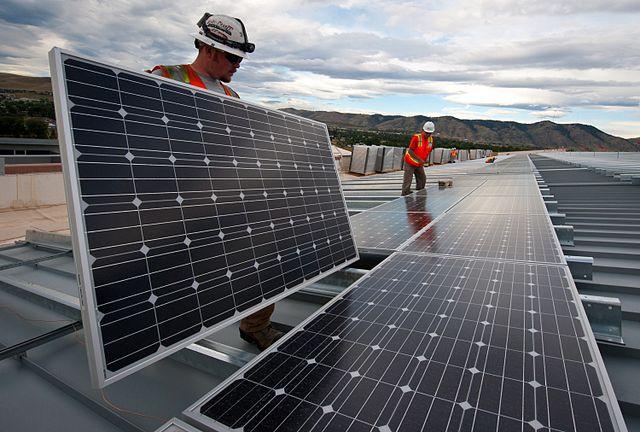

One common criticism of solar does, unfortunately, have merit: Thus far, rooftop solar incentives have gone mostly to well-off homeowners in major cities, leaving Americans in remote regions, and the poor, out of the mix.
Now, the White House is trying to change that with a new work-development program and the revival of a grassroots solar program, both aimed at broadening the solar revolution.
American solar is typically concentrated in a few places with favorable policies – such as California – or in certain communities where people are wealthy enough to afford solar panels with high upfront costs. The stigma that solar is an energy of the rich, sadly, is true, as studies show that well-off homeowners are the ones putting panels on their rooftops. Alternative methods for expanding solar energy, such as community solar, have, so far, yet to take off.
What this shows is that, despite this growth, there is a lot more we can do to expand solar. President Barack Obama -- who during his 7.5 years as the nation's chief executive saw solar electricity generation grow by an astounding 3,000 percent -- is pushing for clean energy to be one of his lasting legacies. That is why his administration is out to not only expand solar access, but also bring solar jobs to more Americans.
Launched earlier this month, the president's Clean Energy Savings for All initiative is actually a rebirth of a program initially launched in 2007 and shelved a year later due to the financial crisis. Essentially, it allows families of any means to gain access to a government-backed mortgage to buy homes with solar panels already in place. It is aimed specifically at the low- and moderate-income Americans that still have limited access to solar energy.
“We applaud the administration for its continued commitment to expanding access to clean, affordable, reliable electricity,” said Tom Kimbis, interim president of the Solar Energy Industries Association, in a press statement. “From rural America to our nation’s inner cities, everyone deserves the chance to participate in the solar revolution.”
Alongside this came, days later, an announcement that the White House will work with the Solar Foundation on a huge workforce-development program. This ensures that the boom in solar jobs also empowers low-income communities, ideally building a virtuous cycle of economic growth.
“As the number of solar jobs increases dramatically each year, the Solar Training Network will help give job seekers the training opportunities they need, while helping employers gain access to qualified candidates,” said Andrea Luecke, president and executive director of the Solar Foundation, in a press statement. The partnership, entitled the Solar Training Network, aims to train 75,000 people for careers in solar in the next 3.5 years – an ambitious goal, but one that is necessary for us to truly scale up solar.
Both programs show that the current administration is serious about ensuring the United States fulfills its commitments as part of the Paris Agreement, agreed to late last year. However, it will be up to the next president to continue Obama's second-term moves. And, from what we heard at the Democratic and Republican Conventions these past few weeks, it is obvious that only one party's nominee is ready to lead on climate and solar.
Image credit: Department of Energy via Wikimedia Commons (public domain)
Pfizer, GSK Accused of Price Gouging of Vaccinations for Refugees in Greece
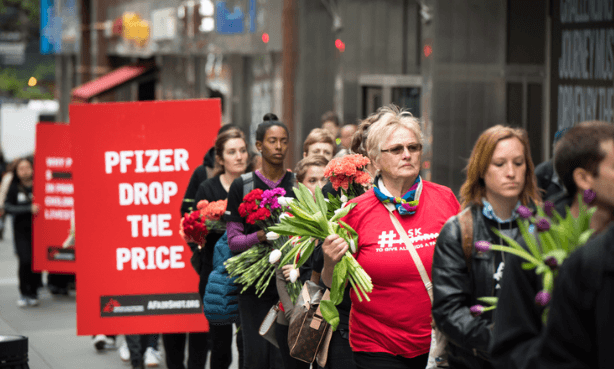

GlaxoSmithKline (GSK) and Pfizer are amongst the pharmaceutical companies that insist they are doing what they can to help the world cope with the global refugee crisis. But according to the humanitarian aid group, Doctors Without Borders/Médecins Sans Frontières (MSF), these companies’ obstinacy in lowering their price for critical vaccines at refugee camps in Greece is putting children at risk.
MSF put volunteer doctors to work in Greece when the humanitarian crisis in that country exploded last year, due largely to the influx of Syrian refugees fleeing their country’s ongoing civil war. In five Greek islands, on the country’s border with Macedonia and in Athens, MSF provides a bevy of services, including mental health consultations, immediate care for victims of torture and the delivery of basic healthcare.
But the key focus for MSF is immunizations. The lack of healthcare access in Afghanistan, Iraq and Syria made it nearly impossible for many families to vaccinate their children. The crowded and often unsanitary conditions at these refugee camps put them at risk for rapid disease outbreaks. Add the trauma and exhaustion suffered by many of these refugees, and the chances of life-threatening illnesses sweeping through these settlements becomes even higher. To that end, MSF said it has vaccinated at least 5,000 children, from the ages of 6 months to 15 years, across these camps since May.
The problem, however, is that while most pharmaceutical companies have long agreed to sell their vaccines and medicines to developing countries at a highly discounted rate, the same policy has not applied to middle- and higher-income countries trying to cope with this ongoing crisis.
[embed]https://www.instagram.com/p/BH2LtCCD9wR/?taken-by=forcedfromhome[/embed]
Most critical, according to MSF, is for pneumonia vaccines (PCV) to be sold at a rate at or near the lowest available rates sold on the global market. Governments of poorer nations can purchase such vaccines for as low as $3.10 a dose. But because such pricing is not available in Greece, MSF claims each dose costs 60 euros (US$68) at local pharmacies. MSF says it cannot purchase the vaccines through Gavi, the international organization that works with pharmaceutical firms to price vaccines at a far more affordable rate.
MSF pressed the issue with an online petition, signed by over 400,000 people, that asked pharmaceutical companies to lower the price of their pneumonia vaccines. The NGO said its representatives personally delivered copies of that petition to Pfizer and GSK at their American and Europen offices.
So far, however, neither company is budging. GSK, for example, already declared that it would not lower its price any further. GSK claims that its PCV, Synflorix, is already priced at $9.15 per child ($3.05 a dose, as a child must be inoculated three times in order for the vaccine to be effective). MSF requested the price drop globally to $5 for the full course of doses, but GSK said that would mean it would have to sell and distribute that vaccine at a loss. The company says it has already entered into a three-year agreement with MSF to supply Synflorix for use in refugee camps.
While the world has turned its attention elsewhere since the refugee crisis dominated the newswires last fall, this human rights crisis is far from going away. The Christian Science Monitor, in fact, reported that while far fewer refugees are attempting to cross from Turkey into Greece, a spike in the number of North Africans attempting to cross the Mediterranean is underway. Big Pharma, NGOs such as MSF, governments and the United Nations must arrive at consensus on countless challenges the refugee crisis presents the world. And preventing communicable diseases from spreading, and treating children who had no say in leaving their homes, has got to be at or near the top of this list.
Image credit: MSF/Edwin Torres
Chipotle Ventures into Burgers as Labor Woes Draw Fire
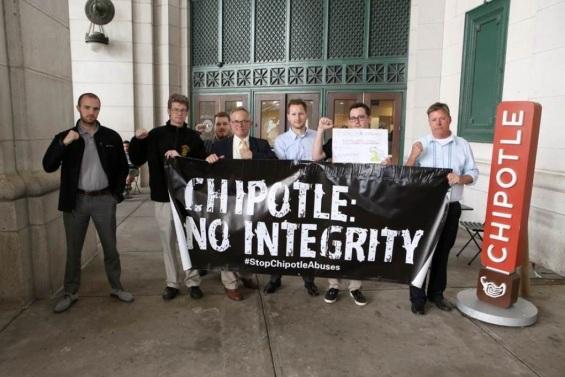

It is easy for a firm to claim that it is sustainable, responsible and conscientious. But those statements become more difficult and nuanced when one factors in a company’s supply chain. Chipotle is finding that out now. An ongoing labor dispute with one of its produce suppliers threatens to harm Chipotle’s reputation with a consumer base that's becoming increasingly jaded about the company.
For the past year, Chipotle struggled with food contamination at some of its outlets, which resulted in poor earnings as its stock price fell precipitously after hitting a record high last fall. Just when it appeared that the company had turned a corner, one of Chipotle’s executives made headlines after being arrested on cocaine possession charges last month.
Concerns over food safety and what some critics call excessive executive pay have continued to plague the company with public relations headaches. Meanwhile Chipotle is trying to diversify its business by rolling out a new burger chain. But according to some organized labor groups, the treatment of workers within one of Chipotle’s key suppliers should give its customers and stakeholders pause for thought.
Earlier this year, a coalition led by the Teamsters and International Labor Rights Forum (ILRF) urged Chipotle to join its fight against what they say are numerous abuses at Taylor Farms in Tracy, California. Teamsters representatives claim Taylor Farms’ employees have suffered a wide range of abuses at the Tracy location. The charges include intimidation tactics to prevent organizing into a union, harassment, poor working conditions and unfair pay.
In order to raise awareness of what they say are the indignities that the 900 workers at this Tracy plant have endured since 2013, organized labor activists held protests at various Chipotle locations across the U.S. Among the most critical point they tried to broadcast to the chain’s customers is that Taylor Farms has been cited for at least 75 health and safety violations over the past year.
Accusing Taylor Farms of having 150,000 food items recalled over the past year, the ILRF’s Liana Foxvog suggested that Chipotle use its leverage to convince Taylor Farms to clean up its business practices. “Chipotle must live up to its proclaimed values and tell Taylor Farms there can be no food safety when workers are mistreated,” Foxvog wrote in an emailed statement to TriplePundit. “Chipotle should tell Taylor Farms to clean up its act or that it will drop Taylor Farms as a supplier.”
According to the ILRF, however, Chipotle has not responded to these labor groups’ concerns. And in April the company said it did not wish to become involved in the ongoing dispute between Taylor Farms and its employees.
Instead, Chipotle has become more involved with its foray into the burger business. The company recently made headlines with its July 28 announcement that it would launch Tasty Made. The burger, fries and shake chain will open later this year in Lancaster, Ohio. Across newspapers and on blogs alike, the news was greeted with skepticism as analysts suggested the company should focus on its core business. After all, the market is already saturated with hamburger chain upstarts, from California’s Habit Grill to New York’s Shake Shack.
If Chipotle goes all-in on this Tasty Made venture, that would mean more produce from suppliers like Taylor Farms. But as the ILRF and Teamsters insist, consumers should push Chipotle to take action if it will continue to serve “food with integrity.” And Foxvog told us the problem is only getting worse. The past spring alone, Taylor Farms was cited over 30 times by Cal/OSHA for workplace safety violations and has paid almost $100,000 in fines. In June, the company also fired 192 workers, and they have little recourse to save their jobs. “Many of them are long-time Taylor Farms workers who perform the same duties as Taylor Farms’ direct employees,” Foxvog said.
The old saying “a fish rots from the head down” applies to Chipotle. Just as fashion companies cannot absolve themselves of responsibility when abuses occur at the garment factories supplying them with garments, the same lesson applies to restaurant companies. Tackling the Taylor Farms controversy head-on would help Chipotle repair a reputation that has nosedived over the past year.
Image credit: Teamsters
Futuristic ‘Straddling Bus’ in China Promises to Transform Public Transport
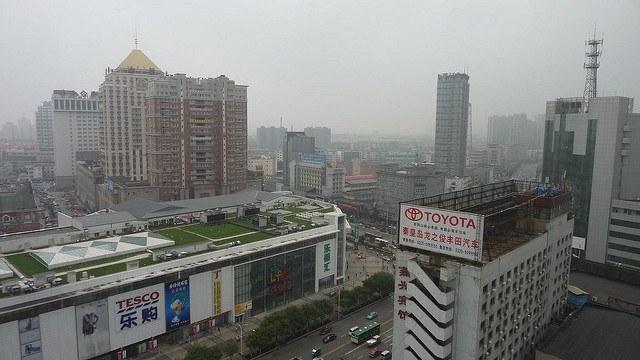

Last week in the Chinese coastal city of Qinhuangdao, 190 miles (300 kilometers) east of Beijing, a massive electric vehicle that appeared to be part-Transformer, part-Pokémon made its debut. The transit elevated bus (TEB), or “straddling bus,” embarked on a run just short of 1,000 feet (300 meters) at a top speed of 37 miles (60 km) per hour. This vehicle’s key selling point? It holds up to 1,400 passengers, runs on electric power and can hover over two lanes of traffic. Cars can drive through the TEB with plenty of clearance, meaning no interference to the daily commute.
The buzz over the TEB dominated China’s most popular social networking site, Weibo, as well as the international press from the New York Times to the BBC. Most writers described the TEB has a game-changer that could eventually disrupt public transportation. Engineers at the company that designed and built this floating bus touted its efficiency and cost-effectiveness. And of course, plenty of observers wondered what could happen in the event trucks, or cars with items such as bicycles atop their roofs, try to navigate the roads with these behemoths driving along with them.
Check out the Twitter pictures below to see what we're talking about, courtesy of China Xinhua News:
World's first transit elevated bus, TEB-1 on its launching test Tuesday in Qinhuangdao, N China's Hebei pic.twitter.com/yMepYWD1kD
— China Xinhua News (@XHNews) August 2, 2016
According to TEB Technology, the company that designed this vehicle, straddling buses offer several advantages. The vehicle has an electricity-powered drive train, and can recharge at each stop in order to have enough power to get from destination to destination during its daily route. Running on rails, up to four TEB vehicles can be connected in order to haul passengers on China’s congested streets. On roads wider than two lanes, larger vehicles such as trucks and vans can continue to drive in parallel with the TEB.
In cities using 40 of these vehicles to travel on round-trip routes 25 miles (40 km) long, 400,000 passengers could be transported daily, reducing traffic congestion by up to 35 percent, says TEB Technology, the company behind the bus. The cost savings for municipalities would be significant as well, as TEB Technology insists that cities adopting these straddling buses could do so at a cost far lower than building elevated trains or digging under the earth to build a subway system.
It is easy to see where such a vehicle would work. Yonge Street in Toronto, 9 de Julio in Buenos Aires, and Wilshire Avenue in Los Angeles are just a few examples of where the straddling bus could seamlessly transfer commuters from residential areas to business centers. Nevertheless, this technology has a long road ahead. The Qinhuangdao test run, it must be noted, was in a highly controlled environment. How would this TEB perform in everyday traffic, where distracted drivers, road rage and tired truck drivers could result in even more mayhem?
And the straddling buses still need infrastructure: Long tracks of rail would still need to be installed, and the typical bus shelter with a bench is not going to suffice for these massive vehicles. Navigating turns in these buses would also appear to ensnare traffic even more instead of helping it flow smoothly. Traffic authorities would have to ban trucks and perhaps even vans of a certain size from streets on which these huge bus/train hybrids run. But as municipalities seek to design the smart cities necessary in order to sustain urbanization trends this century, the feasibility of these straddling buses in an option worth studying.
Image credit: Flickr/Bill Bensen
Environmental Justice Wins with California Cap-and-Trade
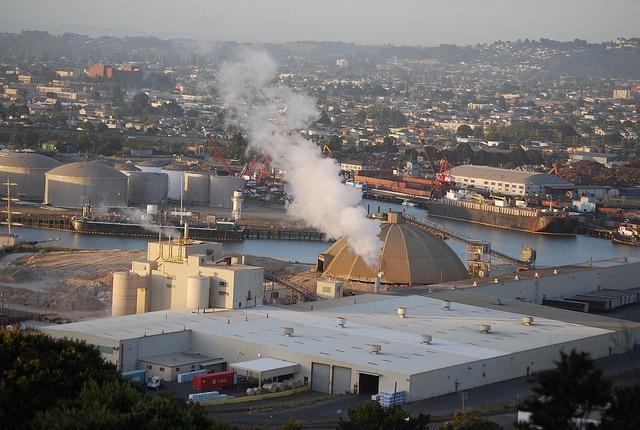

By Jacoba Aldersebaes
Environmental justice is in need of a win, especially when the current climate crisis serves to magnify racial inequality and dramatically effects the poor and communities of color. This win is exactly what is happening in California, where a cap-and-trade system is eliminating greenhouse gas emissions, and doing so without disproportionately impacting low-income communities.
A recent study by UCLA’s Luskin Center for Innovation, provided analysis of the California cap-and-trade program’s impact on households in disadvantaged communities across California, finding that the state is effectively protecting low-income residents from cap-and-trade compliance costs. Given that the study is based on modeling versus actual outcomes, it is perhaps far from ideal, but it does draw attention towards this issue and its need for further study. Assuredly, the report was specifically able to look at how well the state’s efforts to help low-income communities are reflected in the electricity, natural gas, and gasoline sectors.
The California carbon market’s tactics have been found to lower greenhouse gas emissions from large emitters, while simultaneously providing critical support to California communities. Policies implemented include helping residents reduce utility usage to lower bills; distributing cap-and-trade auction revenue directly to residents through climate credits; and working with utility companies to continue low-income incentive programs for households unable to afford their monthly bills.
A major concern when cap and trade was first implemented in 2013 was the possibility that the 450 covered entities would pass along the additional costs of greenhouse gas reduction strategies to the consumer, which could very quickly impact low-income communities at a higher rate. For example, a fee increase on an electricity bill would affect a low-income household more than a middle or upper class earner, as household bills account for a higher percentage of the total budget in a family with less discretionary funds.
The state strategies enacted to prevent this inequality and support consumers, have indeed made huge strides by ensuring low-income households are not disproportionately affected by cap-and-trade financial outcomes. Climate credits in particular are an impactful and replicable measure that others may be wise to implement in their own state systems. Climate credits in California show up as a line item credit on consumer’s energy bill twice per year. The money is derived from permits sold that the utility companies are required to hold to emit carbon. This credit is used to offset any partial costs passed down from the utility due to cap and trade.
However, environmental justice concerns have a wider span than simply income-related issues. The “trade” half of cap and trade can cause other non-desirable outcomes, such as cutting corners on environmental regulation by moving industry to more affordable locations to cut costs. These “more affordable” areas happen to be where most low-income communities reside, putting residents at a higher risk of exposure to pollutants. Health is a major concern for environmental justice advocates, and admittedly, has not been tracked as clearly as the financial impacts of the program.
Despite reporting around health benefits being less than ideal, an Environmental Defense Fund report recently found that California’s cap-and-trade program will actually prevent 40,000 lost workdays due to health concerns by 2020, and over 74,000 days by 2025. Other benefits include preventing premature deaths, asthma and heart attacks, and hospitalizations. While these are promising overall statistics, future measurements will need to be focused on disadvantaged communities, with an eye towards ensuring cap and trade doesn’t unduly impact the health of this vulnerable population.
In late 2015, California Governor Jerry Brown sent a directive to the California Environmental Protection Agency (EPA) to produce a report that tracks public health and environmental exposures in disadvantaged communities. The California EPA has one year to complete the report, and will update the findings every three years thereafter. This directive is seen as a positive step by the environmental justice community, as it has finally drawn attention to this incredibly important issue.
Overall, California has been a consistent leader in the environmental movement and has once again proven its credentials by placing emphasis on the importance of environmental justice in the implementation of its cap-and-trade system. There has been strong sentiment from the state that while the climate crisis affects us all, it doesn’t affect us all equally. Much of the program’s success can be attributed to grassroots efforts, as well as a shared belief that protecting the environment and fighting climate change should not come at the expense of those struggling with poverty and inequality.
The next big hurdle for cap and trade will be to forge ahead and extend the program past the legislative end date of 2020. In July, Gov. Jerry Brown stated his intent to extend the cap-and-trade program through 2050, although questions of authority exist and nothing is yet settled. While this announcement is a strong signal for the continuation of the market, extending California’s cap-and-trade program is something environmental justice advocates, politicians, and everyone in between should be prepared to fight for.
Image credit: Flickr/nick fullerton
Jacoba Aldersebaes is the Administrative Coordinator for The Climate Trust.